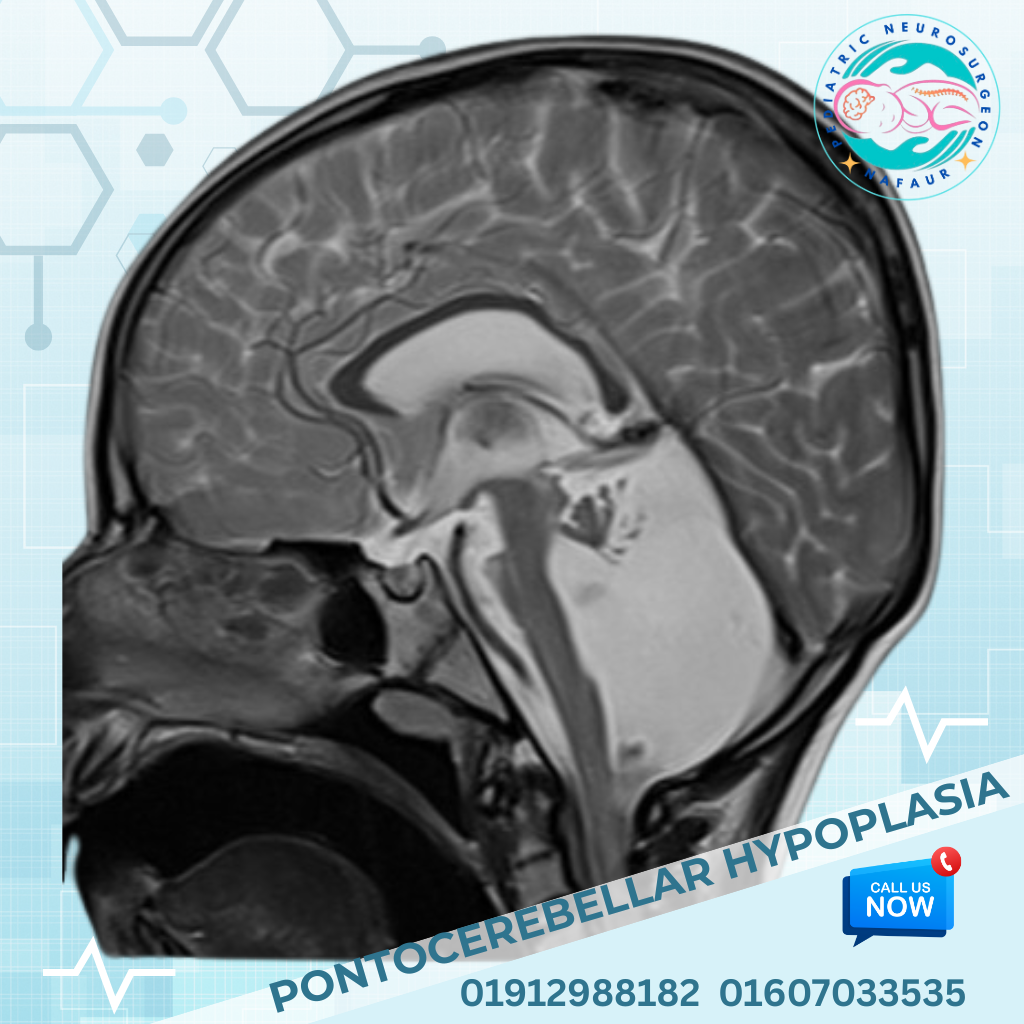Pontocerebellar hypoplasias
Pontocerebellar hypoplasias
Pontocerebellar Hypoplasias (PCH) refer to a group of rare, progressive neurodevelopmental disorders that involve underdevelopment (hypoplasia) or degeneration of the cerebellum and pons, parts of the brain crucial for coordination, movement, and vital autonomic functions. PCH is typically congenital, meaning symptoms are present at or shortly after birth. It is usually caused by genetic mutations and is considered a neurodegenerative disorder, with many subtypes, each presenting with varying degrees of motor dysfunction, developmental delay, intellectual impairment, and in severe forms, early mortality. 🌍 PCH in Bangladesh: A Growing Awareness In Bangladesh, awareness and diagnosis of Pontocerebellar Hypoplasias remain limited. Many children presenting with global developmental delay, floppy muscle tone (hypotonia), seizures, and feeding difficulties are often misdiagnosed as having cerebral palsy or nonspecific motor delay. Due to recent improvements in neuroimaging facilities (MRI), genetic testing, and access to specialized pediatric neurosurgical care through institutions like National Institute of Neurosciences & Hospital (NINS) and the Bangladesh Paediatric Neurocare Centre, early diagnosis and supportive management are becoming more achievable for Bangladeshi families. 🔬 Classification and Genetic Basis There are over 10 recognized types of PCH, each caused by mutations in different genes. Common subtypes include: PCH Type 1 – with motor neuron disease features PCH Type 2 – most common type, with extrapyramidal symptoms and early severe impairment PCH Type 6 – relatively milder form with cerebellar atrophy and speech delay PCH Type 8, 9, and others – newer subtypes with various gene defects PCH is often autosomal recessive, meaning both parents carry the faulty gene. Genetic testing is essential for definitive diagnosis and family planning. 🧒 Common Symptoms and Clinical Features Global developmental delay (motor, language, cognition) Severe hypotonia (floppiness in infancy) Ataxia or lack of balance and coordination Feeding difficulties and failure to thrive Abnormal eye movements, strabismus, or nystagmus Seizures or epileptic spasms Intellectual disability (moderate to profound) Microcephaly (small head size) Respiratory complications Early death in severe cases (esp. types 1 and 2) 🔍 Diagnosis of Pontocerebellar Hypoplasias 🧠 MRI Brain Gold standard in identifying cerebellar and pontine hypoplasia or atrophy Helps distinguish from Joubert Syndrome, Dandy-Walker Malformation, and Cerebellar Dysplasia 🧬 Genetic Testing Essential to confirm subtype Helps in prognosis, counseling, and recurrence risk analysis for future pregnancies 🧪 Metabolic Screening To rule out other inherited metabolic disorders with similar symptoms 🧠 EEG Often needed to assess seizure activity 👩⚕️ Clinical Evaluation By a multidisciplinary team including pediatric neurosurgeon, neurologist, geneticist, and therapists 🛠️ Treatment and Management in Bangladesh There is no curative treatment for Pontocerebellar Hypoplasias. Management is supportive and multidisciplinary, aiming to improve the child’s functionality, comfort, and quality of life. 1. Neurosurgical Interventions (where applicable) VP Shunt for associated hydrocephalus Seizure surgery evaluation for medication-resistant epilepsy Monitoring for craniovertebral instability or Chiari malformation in selected cases 2. Medical Management Antiepileptic drugs (AEDs) for seizure control Nutritional and gastroenterological support for feeding problems Respiratory support in advanced cases 3. Rehabilitation and Therapy Physiotherapy to prevent contractures and improve motor skills Speech therapy for language and communication Occupational therapy to develop functional independence Assistive devices for mobility and feeding 4. Parental Counseling and Genetic Guidance Counseling on prognosis, daily care, and future pregnancy risks Prenatal genetic testing offered for high-risk families 🔄 Prognosis The prognosis varies depending on the PCH subtype: PCH Type 2 – most common; children may not survive beyond early childhood PCH Type 6 and mild forms – children may achieve limited developmental milestones Regular therapy, early diagnosis, and supportive care can improve quality of life even in severe forms 👨⚕️ Why Choose Dr. Md. Nafaur Rahman? Bangladesh’s leading pediatric neurosurgeon, specializing in congenital and genetic brain disorders Extensive experience in diagnosing cerebellar disorders using advanced neuroimaging Offers integrated care at NINS and Bangladesh Paediatric Neurocare Centre, including: MRI interpretation Genetic counseling Neurosurgical management of associated complications Long-term neurodevelopmental follow-up 📞 Schedule an Expert Evaluation Dr. Md. Nafaur Rahman Assistant Professor, Pediatric Neurosurgery, NINS Chief Consultant, Bangladesh Paediatric Neurocare Centre 📞 For Appointment: 01912988182, 01607033535 🌐 Visit: www.neurosurgeonnafaur.com












